-
Forecasters use Iron Dome science to handle disasters
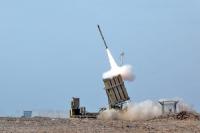
Typhoons, floods, droughts, earthquakes, hurricanes, wildfires — the frequency and intensity of natural disasters across the globe are worsening, and these deadly events could continue plaguing the planet as a result of climate change. Iron Dome tech firm uses rocket science to enable utilities to plan for and manage effects of wildfires, storms, hurricanes and earthquakes.
-
-
Wildfire risk in California no longer linked to winter precipitation
From 1600 to 1903, the position of the North Pacific jet stream over California was linked to the amount of winter precipitation and the severity of the subsequent wildfire season, the team found. Wet winters brought by the jet stream were followed by low wildfire activity, and dry winters were generally followed by higher wildfire activity. Wet winters no longer predict possible relief from severe wildfires for California, according to a new study.
-
-
Fast, simple new method for assessing earthquake hazard
Geophysicists have created a new method for determining earthquake hazards by measuring how fast energy is building up on faults in a specific region, and then comparing that to how much is being released through fault creep and earthquakes.
-
-
Asteroids are harder to destroy than previously thought
A popular theme in the movies is that of an incoming asteroid that could extinguish life on the planet, and our heroes are launched into space to blow it up. But incoming asteroids may be harder to break than scientists previously thought, finds a new study that used a new understanding of rock fracture and a new computer modeling method to simulate asteroid collisions.
-
-
Emission regulatory rollback: 200M metric tons of additional green house gasses annually
Following the release of the Fourth National Climate Assessment, the Trump administration is proposing to give four top climate-polluting industries a pass. A new report says that six specific regulatory rollbacks will cause an annual increase of more than 200 million metric tons of carbon dioxide equivalent, resulting in the loss of hundreds of billions of dollars in forgone benefits, and lead to tens of thousands of premature deaths.
-
-
Autonomous drones can help search and rescue after disasters
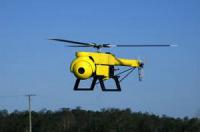
When disasters happen – whether a natural disaster like a flood or earthquake, or a human-caused one like a mass shooting or bombing – it can be extremely dangerous to send first responders in, even though there are people who badly need help. Drones are useful, and are helping in the recovery after the deadly Alabama tornadoes, but most require individual pilots, who fly the unmanned aircraft by remote control. Autonomous drones could cover more ground more quickly, but would only be more effective if they were able on their own to help rescuers identify people in need.
-
-
“Clustering” land buyouts could improve flood resiliency after Hurricane Harvey
A new study analyzes flood loss claims and estimates from over 74,000 properties impacted by Hurricane Harvey in Houston’s Harris County. The study finds that a strategic land buyout approach that prioritizes the purchase of land parcels in ‘clusters,’ as well as proximity to existing open space, is just as cost-effective as the traditional, piecemeal approach but with major added ecological and social benefits.
-
-
Resilience and adaptation strategies can address the impacts of climate change
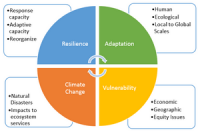
By the end of this century, Chicago could face the kind of searing summer heat that Las Vegas sees now. Phoenix could hit 110 degrees, 60 or more days a year. That’s not wild speculation. It’s the official position of 13 federal agencies on climate change, released late last year with a warning: Local governments need to do more to prepare. Every road they build, every storm drain they put in, will have to hold up under conditions that modern civilization has never seen. How do you plan for that? Researchers at RAND have been working on that problem for a while now.
-
-
Population increases, climate change will cause future U.S. water shortages
Climate change plus population growth are setting the stage for water shortages in parts of the U.S. long before the end of the century, according to a new study. Even efforts to use water more efficiently in municipal and industrial sectors won’t be enough to stave off shortages, say the authors of the new study. The results suggest that reductions in agricultural water use will probably play the biggest role in limiting future water shortages.
-
-
Simulating forest and fire dynamics to understand area burn of future wildfires

Climate change and wildfire – it’s a combustible mix with costly devastation and deadly consequences. With a goal of understanding the link between the two variables, researchers over the years have studied the effects of climate and wildfire interactions in the Sierra Nevada mountain range. That research has evolved into learning about the distribution of trees, the extent of forest cover and carbon dynamics.
-
-
Robots help in the demanding Fukushima cleanup efforts
In 2011, a tsunami triggered by a magnitude 9.0 earthquake all but decimated the Pacific Coast of Tohoku, Japan, including the Fukushima Daiichi power plant. A catastrophic meltdown ensued. Many tons of nuclear fuel, boiled down to a radioactive lava, corroded the steel surrounding the facility’s three reactors. Today, the cleanup effort is still projected to take several decades. S&T and NIST developed standard test methods for robots, which the Japanese government is now beginning to apply directly to their Fukushima cleanup efforts.
-
-
Long-distance earthquake detection
In traditional seismology, researchers studying how the earth moves in the moments before, during, and after an earthquake rely on sensors that cost tens of thousands of dollars to make and install underground. Now researchers have figured out a way to overcome these hurdles by turning parts of a 13,000-mile-long testbed of “dark fiber,” unused fiber-optic cable, owned by the DOE Energy Sciences Network (ESnet), into a highly sensitive seismic activity sensor that could potentially augment the performance of earthquake early warning systems currently being developed in the western United States.
-
-
“It eats everything” – the new breed of wildfire that’s impossible to predict
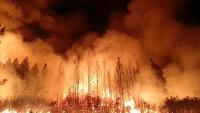
Climate change and negligent forest management are causing higher-intensity, faster-moving fires that can generate enough energy to evolve into erratic firestorms, known as pyroCbs, in the face of which first responders can do little.
-
-
L.A. showcases quake alert system
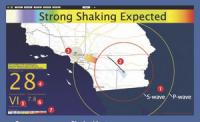
California is earthquake country, and residents of Los Angeles can now get some critical warning, when conditions are right, after a quake has started and seismic waves are heading their way. The long-delayed system, called ShakeAlertLA, is the first of its kind in the United States.
-
-
Which U.S. volcanoes pose a threat?
The United States is one of Earth’s most volcanically active countries. Since 1980, there have been 120 eruptions and 52 episodes of notable volcanic unrest at 44 U.S. volcanoes. An updated USGS assessment finds that 161 U.S. volcanoes pose potential threats to American lives and property, eight fewer than in 2005. The eighteen very highest threat volcanoes are in Alaska, California, Hawaii, Oregon and Washington. Thirty-nine other volcanoes are high threat, 49 are moderate, 34 are low, and 21 are very low threat.
-
More headlines
The long view
Trump Aims to Shut Down State Climate Policies
President Donald Trump has launched an all-out legal attack on states’ authority to set climate change policy. Climate-focused state leaders say his administration has no legal basis to unravel their efforts.
